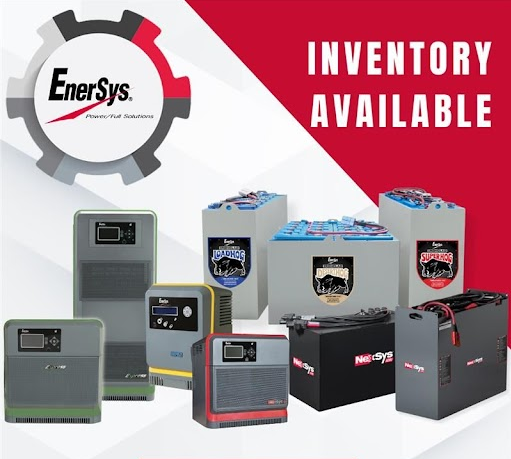Why Do Warehouses Choose Stand-Up Over Sit-Down Counterbalance Forklifts?
If you’ve ever spent time on a warehouse floor, you know it’s not a one-size-fits-all kind of world. Every decision—from layout to equipment—can impact productivity, safety, and bottom lines. One of the biggest debates in operations? Stand-up counterbalance forklifts vs. sit-down forklifts.
On the surface, they both move pallets from point A to B. But dig a little deeper, and you’ll see why more warehouses—especially those dealing in tight, high-turn environments—are leaning toward stand-up counterbalance trucks. Let’s unpack the “why,” explore the tradeoffs, and sprinkle in a little Warehouse 101 while we’re at it.
The Layout Game: Maneuverability Is King
Picture this: you’ve got narrow aisles, high racking, a busy floor, and clock-watching managers. That’s where stand-up counterbalance forklifts shine. These nimble machines are built for tighter turns and quick directional shifts. Operators can hop on and off quickly, which is a game-changer for cross-docking or multi-stop workflows.
Sit-down forklifts? Sure, they’re great for longer hauls or outdoor work, but in confined spaces, they can feel like trying to parallel park a pickup in a compact spot. Not impossible—just not ideal.
Productivity: Seconds Add Up
In warehouse operations, time is money. Stand-up forklifts allow operators to enter and exit faster, improving workflow for high-frequency tasks like order picking or loading trailers. Even getting broken pieces of pallets or shrink wrap to keep the warehouse clean is easier for the operators to take action on.
Sit-down models, while comfortable for longer shifts, slow down that in-and-out rhythm. It might not sound like a big deal, but across hundreds of moves per day, those seconds add up fast!
Operator Visibility & Safety
Operators on stand-up trucks have better visibility in congested warehouse areas. They’re upright, eyes-up, and pivot-ready. It's kind of like being the point guard in a basketball game—you’ve got to see everything coming.
Sit-down forklifts? They provide a more relaxed posture, but blind spots become more of an issue, especially in tight spaces or around pedestrian traffic.
DID YOU KNOW? Most stand-up or counterbalances are known as “dockstockers” to reference taking materials from the dock and stocking away.
SAFETY INSIGHT: Stand-up counter balances are designed to have the operator swivel their neck left to right when backing out of a trailer. This is much more ergonomic with less worker fatigue and injury compared to doing a complete back turn on a sit-down forklift.
Sit-Down vs. Stand-Up Counterbalance Forklifts: Not All Turns Are Equal
Sit-down forklifts are what most folks picture when they think “classic forklift.” The operator sits while driving and turning. These machines generally need a wider aisle to operate effectively because they swing out as they turn.
A typical sit-down counterbalance forklift will need 12 to 13 feet of aisle width to safely make a 90-degree turn with a pallet.
Now compare that to a Stand-Up Counterbalance Forklift (sometimes called dock stockers or stand-up riders). These are designed for tighter spaces and faster on/off movement, especially in high-turn environments. Stand-up models can get away with a tighter aisle – usually around 10 to 11 feet, depending on the model and load.
Sounds great, right? But hold up – there’s a hidden factor many forget...
🔋 Bigger Battery, Bigger Aisle
Here’s where real-world operations meet spec sheets: battery box size.
Stand-up counterbalance forklifts often require larger battery compartments to support their design and duty cycle, especially electric units with long shifts or heavier lifting requirements. That larger battery means a longer chassis, which bumps up the required turning radius.
So, while the brochure might tell you 10.5 feet is enough, the actual aisle clearance might need to be 11.5 feet or more, depending on your model and battery configuration.
Moral of the story? Always check the real specs – not just the “minimum” number in the manual – especially if you're working with a non-standard battery setup.
🔄 3-Wheel vs. 4-Wheel Sit-Down Forklifts: Turning the Corner
Not all sit-down forklifts are created equal. If you’re looking for maneuverability without switching to a stand-up, a 3-wheel sit-down forklift might be your answer.
3-Wheel Sit-Downs have a tighter turning radius because of their single rear drive wheel. They pivot almost in place, so they can operate in aisles as narrow as 11 to 12 feet.
4-Wheel Sit-Downs, on the other hand, offer better stability on uneven floors or outdoors, but they need more space. Expect 13-foot minimum aisle widths, sometimes more with longer wheelbases.
If your operation is mostly indoors on smooth concrete, that 3-wheel unit can save you big on space – and potentially let you add another rack row.
Jeff’s Takeaway:
If you’re buying forklifts without thinking about aisle widths, you’re gambling with your productivity.
Here’s a quick cheat sheet:
Forklift Type |
Typical Aisle Requirement |
Stand-Up Counterbalance |
10–11.5 feet |
Sit-Down 3-Wheel |
11–12 feet |
Sit-Down 4-Wheel |
12.5–13+ feet |
And remember: battery box size, operator comfort, and stability needs all factor in. Don't rely on sales specs alone. Test in your actual environment if you can, or get a trusted advisor involved.
Every manufacturer will require a slightly different aisle.
Used and Pre-Owned Market Considerations
Here’s where it gets interesting: the used forklift market for stand-up counterbalance units is strong. These machines are built tough, and many warehouses turn to pre-owned options to save costs without sacrificing performance.
That said, sit-down forklifts tend to have longer lifespans, especially in low-intensity environments. So if your warehouse is more "slow and steady" than "race to the finish," a used sit-down might be the better fit.
Tradeoff alert: stand-up trucks may require more frequent battery changes and charger stations in electric fleets, especially when sourced used. But again, if you’re running a high-turn operation, that tradeoff might be worth the speed gain.
Warehouse 101: Did You Know?
🔍 Did you know that OSHA reports most forklift-related injuries happen not during operation—but during entry and exit? That’s a big plus for stand-up models, which minimize the need for awkward dismounts and climbing. Your safety manager just cracked a smile.
Bottom Line: It’s All About the Fit
Choosing between stand-up counterbalance and sit-down forklifts isn’t about which is “better”—it’s about what fits your operation.
Ask yourself:
- Do we need speed and agility or long-haul comfort?
- Are our aisles wide or tight?
- Will we be buying new, used, or pre-owned?
-
How often will operators enter/exit the lift?
- Do we have the battery infrastructure to support electric stand-up models?
The truth is, the best choice depends on your workflow, space, and people. You can’t forklift your way out of a bad layout, but the right equipment? That can turn bottlenecks into bonuses.



